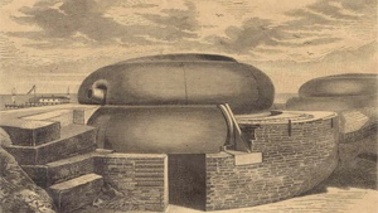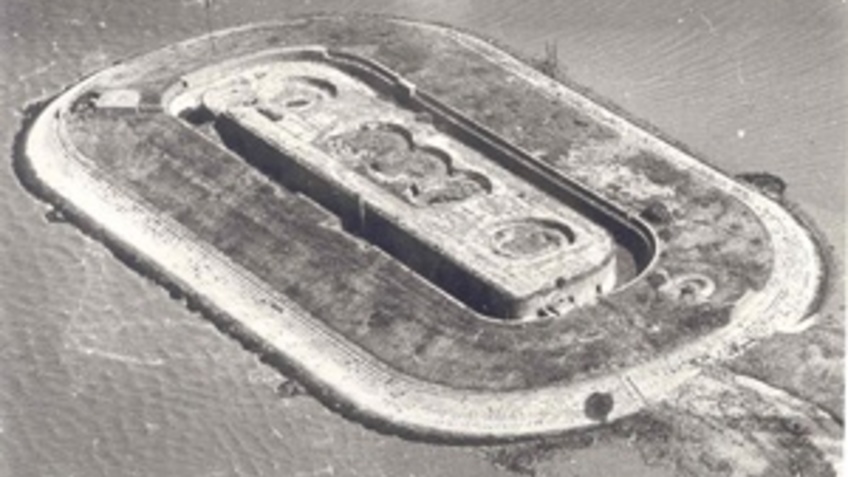
Forts Langlütjen I and II
The wars between the German states and Denmark (1848 to 1850 and 1864) raised questions on the coastal defence of the Weser estuary, especially, when under Prussian supervision, the North German Federation was formed in 1867. A short blockade by the French navy in the Franco-Prussian war of 1870 to 1871 was also seen as a threat. All these strategically significant events led to the subsequent construction of four forts in the Weser estuary. The left bank, territory of the Grand-Duchy of Oldenburg, was to be protected by the two forts Langlütjensand I and II (later abbreviation: Langlütjen I and II). Bremerhaven was to be defended by Brinkamahof I and II. The plans were drawn up in Berlin and reflected contemporary fortification technology, based in particular on Belgian fortresses.
In the mudflats north of Blexen, the Prussian Navy fortified the dune of Langlütjensand with a dam and thus laid the foundation of a coastal fortification named Langlütjen I. The complicated tidal conditions meant that the approximately 300 workmen could only work in the summer months and during low-tide. A causeway of 1.6 kilometres connected the fortress with the mainland. In 1870/71, nine 21-cm-guns were installed in armoured shelters.
North of the first fort, a second one, Langlütjen II, was erected from 1872 to 1876. It was an artificial island made of sand, upon which a brick fort construction went into commission in 1880. A number of 28-cm-guns were stationed there in 1914. Unlike Langlütjen I, there was no direct connection to the shore. Small boats had to do that job. A company of 100 men could stay there for up to four months with all provisions.
These two fortresses were used as military installations until the end of World War I, but never saw action. After 1918 the allies ordered the decommission of military facilities. From 1933 to 1934, Langlütjen II was used as a provisional concentration camp, operated by the SA. About 100 prisoners were held there and maltreated.
During World War II, Langlütjen I was used as an anti-aircraft position and was blown up after 1945. Langlütjen I was later covered with a layer of sand. In 1983, a radar tower was erected on the site. In contrast, the ruins of Langlütjen II are still visible today. It is government property and its future use is still under discussionn.


